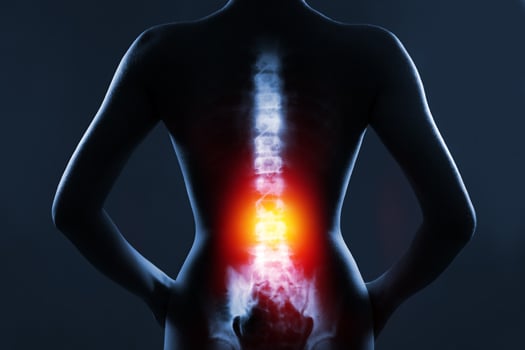
Symptom Triggers
To understand why herniated disc symptoms tend to come and go, it is important to know what triggers these symptoms. Typically, it is a person’s movements and activities that trigger symptoms or change the intensity of what he or she is experiencing at any given moment. For example, if you sleep on your back without enough support, you may wake up with some noticeable back pain or radiating nerve symptoms. Symptoms related to a herniated disc can also be affected by:
• How you sit and stand during the day
• What you eat on a regular basis
• How much exercise you get during the day
• Your daily activities
Location of the Herniated Disc
The most common location for a herniated spinal disc (also commonly known as a "slipped disc" or “ruptured disc”) is in the lower back area. Symptoms may come and go, since this area is more exposed. The herniation may also be affected by twisting, turning, and going from a seated to a standing position. If your herniated disc is in the middle of your spine or higher, you will likely not notice much of a change in symptoms. The only exception is if the neck area is affected. In this instance, the movements of your head and neck can affect symptoms and the intensity of the discomfort, especially when sleeping.
The Degree of Herniation
Another factor to consider is how much the disc is herniated. Herniation refers to a situation where inner disc material has made its way to the outside of the disc. When this happens, nearby nerves are sometimes affected, which is what causes symptoms. If the herniation is minor, you may experience little or no discomfort regardless of the activities you engage in daily. However, if your herniation is more pronounced or extensive, you will likely have more of a fluctuation in symptoms based on your movements and other factors.
Managing Herniated Disc Symptoms
While herniated disc symptoms tend to vary, there are steps you can take to ease your discomfort when it becomes too much of a distraction. This includes:
• Hot and cold applications
• Short periods of rest
• Activity modification
• Posture adjustments
If the remedies mentioned above are not effective, or if your symptoms last for more than 2–3 weeks, see what your doctor has to say. If a herniated disc has not been officially diagnosed, it is also a good idea to see your doctor or a spine specialist.
If you have a herniated disc that causes pain on a frequent basis, your doctor may recommend a discectomy or a less invasive microdiscectomy. Although this is generally one of the most successful back surgery types, having a large hole in the outer ring of the disc more than doubles the risk of needing another operation in the future. A new treatment, Barricaid, is a bone-anchored device that closes this hole, and it is proven 95 percent effective. This means 95 percent of Barricaid patients in a randomized study did not undergo a reoperation due to reherniation in a 2-year study timeframe. This treatment is done immediately following the discectomy—during the same operation—and does not require any additional incisions or time in the hospital.
If you have any questions about the Barricaid treatment, ask your doctor or contact us at 844-288-7474.
For full benefit/risk information, please visit: https://www.barricaid.com/instructions.


Comments